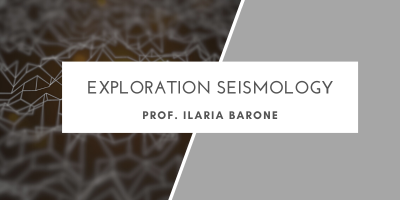Exploration Seismology

Period: First Semester
Course Unit Contents:
INTRODUCTION:
Introduction to exploration seismics and main applications. Review of the concepts seen in the Applied Geophysics course. Types of seismic waves, concepts of reflection, refraction, diffraction and attenuation of elastic waves. Energy partitioning at the interface. Recognition of events in the wavefield (reflections and other events). Vertical and lateral resolution.
SEISMIC ACQUISITION:
Different types of seismic acquisition: refraction, reflection, down-hole.
Land acquisition: sources, sensors, acquisition systems, acquisition geometries.
Marine acquisition: seismic marine sources, sensors (hydrophones, OBS, OBC, OBN), shallow / deep water problems.
4D acquisitions (repeated over time).
SEISMIC PROCESSING:
Elements of digital data processing: Nyquist-Shannon theorem, Fourier analysis, signal amplitude and phase, f-k transform, Radon transform (tau-p), cross-correlation, convolution, digital filters, deconvolution.
Generic processing sequence (marine and land case).
Standard formats for archiving a seismic data. Data reading, geometry application, sorting, gain, velocity analysis, stacking, denoising, deconvolution, static corrections, migration.
Full processing of a 2D marine or terrestrial dataset with Reveal.
INTERPRETATION OF SEISMIC SECTIONS:
Geometric characteristics of the reflectors and seismic facies; terminations; seismic surfaces; seismic sequences or units. Interpretation of seismic sections in contexts of compressive and extensional tectonics.
Planned learning activities and teaching methods: Frontal lessons. Use of Reveal.
In addition to contacting the course instructor, students with disabilities, Specific Learning Disorders (SLD), Special Educational Needs (SEN), and other health conditions can reach out to the Student Services Office - Inclusion Unit to receive more information about opportunities to access teaching with specific support and tools.
